Tables by Google is a free alternative to Airtable. It is a rule-based automation platform for work-tracking. Similar to Airtable, it offers feature-rich tables that can be customized as per the data in the best way possible. Users can create tables for collaborative project management, task management, IT operations, Customer Tracking, Sales CRM, Employee Onboarding, Product Development, and much more.
Tables are sorted under workspaces that help users to keep everything sorted and together. There are different view styles for the table which makes it easy to visualize and interact with the data. Users can add ‘trigger-action’ based bots to the table for automation, add inter/Intra table relationships, and create forms to collect data and feedback. With the help of bots, users can also integrate other services for notification, content updates, and other webhook applications. So, let’s explore the feature of Tables in more detail and see how it stacks up against Airtable.
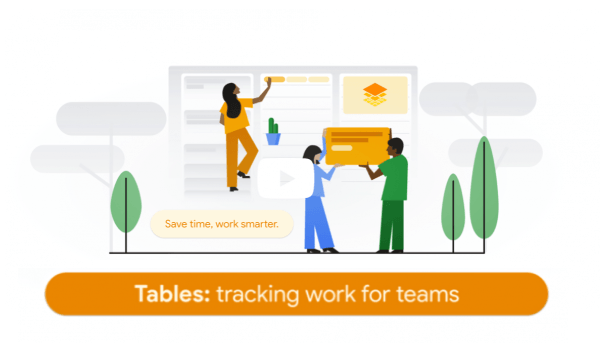
Also read: Build Spreadsheet-based Workflows for Automation by Connecting Apps, APIs, Code
Tables by Google: Free Alternative to Airtable
Tables by Google is currently in the beta phase and available in the United States only. You can just log in with a Google account and start using the service.
Tables Dashboard
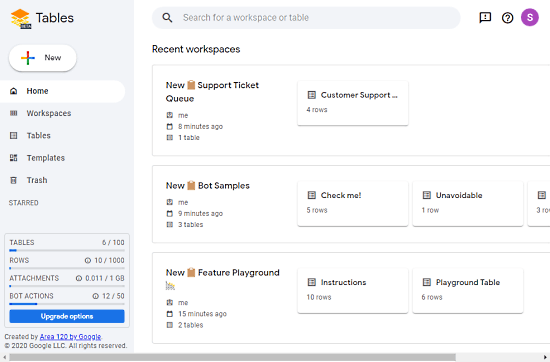
The dashboard of Tables shows all your recent workspaces including the number of tables and bots in each workspace. From the navigation panel on the left, you can jump between workspaces, tables, templates, and trash. It also shows your current usage of the free plan.
Template Library
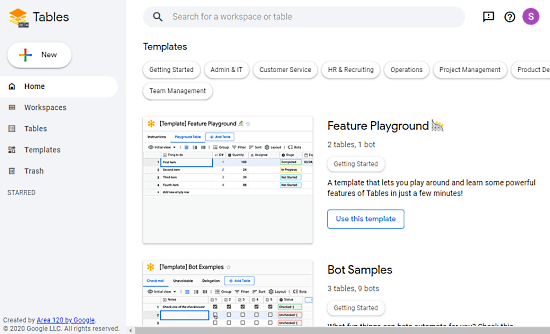
Tables offers dozens of templates specially tailored for specific jobs. You can pick a category from the top and browse all the available templates in that category. You use a template to create a table and then customize it with your data.
Tables
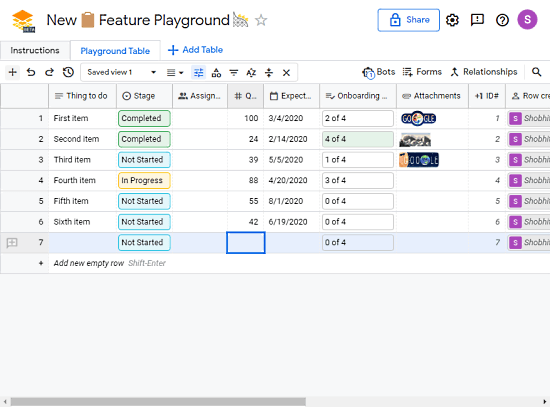
Apart from templates, you can create a blank table to start from stretch or import data from Google Sheets or CSV files. The tables are more like spreadsheets where you can add more tables under the same workspace. The free plan offers up to 100 tables with 1000 rows in each table. The table is highly customized where you can pick a specific data type for each column covering text, number, date, checklist, dropdown, person, tag, checkbox, file attachment, autoID, creator, updater, update time, and more.
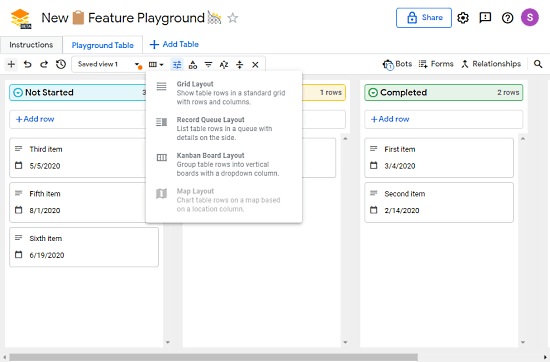
There are also four table views which you can switch as per your project. You can go with Grid Layout, Record Queue, Kanban Board Layout or Map Layout. You can further configure the grid layout, group rows, and apply filters.
Automation using Bots
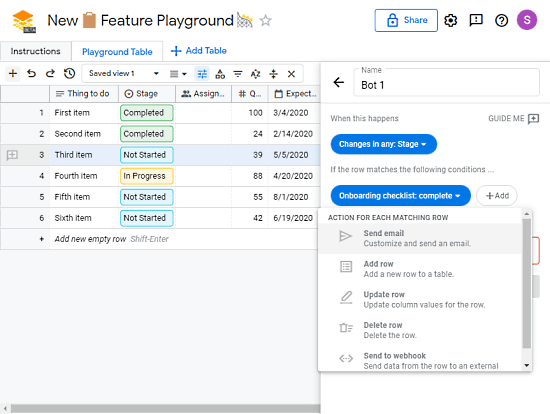
In each table, you can create up to 6 bots for automation. These are the trigger and action-based bot where you can set a trigger and define a condition. Then you can set the following action for that:
- Send email
- Add row
- Update row
- Delete row
- Send to webhook
Create Forms to Collect Data
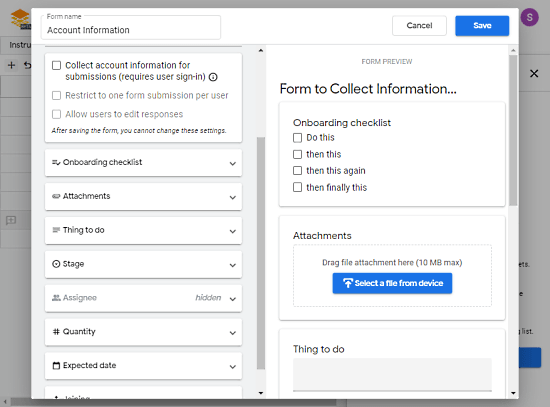
Apart from the bots, you can also create forms within the table. This allows you to easily customize the form based on the table data. While creating a form, it shows you a live preview so you can customize it accordingly. In the free plan, you can create 1 form per table only.
Create Inter/Intra Table Relationships
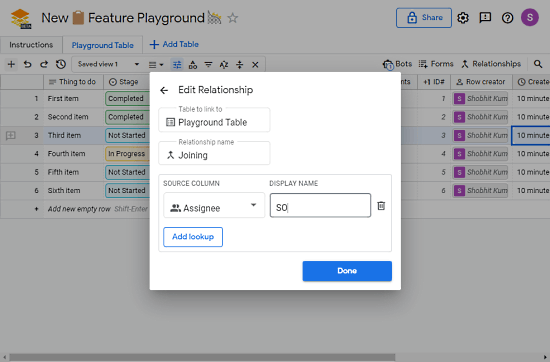
Another handy feature of Tables is Relationship. This allows you to define a relationship row between tables. This way, the data updated at one place will be reflected in the linked row as well. Apart from inter-table relationships, you can link rows from other tables as well.
Integration
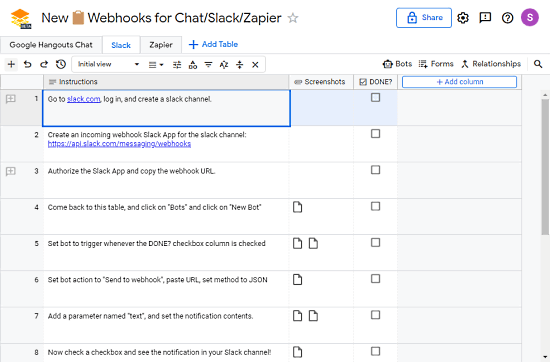
Last but not least, you can integrate Tables with other Google and non-Google services. Currently, it supports Google Chat, Slack, and Zapier. The integration is done through the bots in the table. In the “Webhooks for Chat/Slack/Zapier” template, you can get the instruction to add integration for those services.
Tables vs Airtable: Free Plan Comparison
After highlighting all the main features of the Tables, let’s compare its free plan with Airtable’s free plan.
The free plan of tables lets you create up to 100 tables with 1000 rows in each table. You can add up to 1GB of attachment in each table and actions are limited to 50 per table.
The free plan of Airtable offers unlimited bases with 1200 records per base. The file attachment limit is also double, up to 2GB per base and the automation actions are limited 100 per base.
Wrap Up
Tables by Google is a platform that makes it easy to track projects using automation. Instead of just focusing on a single work type, it addresses various use cases. Users can build their own use case with modular tables and automation. Integration is one major area where it currently lagging behind Airtable. But it is currently in the beta phase so that is supposed to improve gradually. Integrations like GSuite apps, Data Studio, and other similar platforms can be expected in the near future which would make the transition to Tables a lot easier.